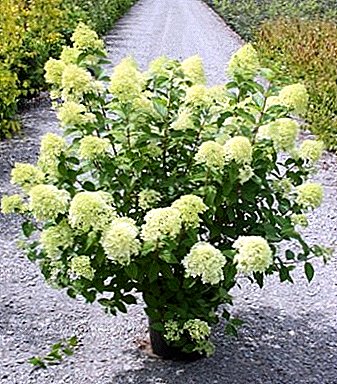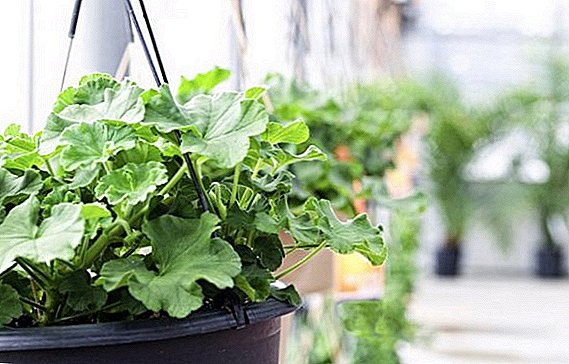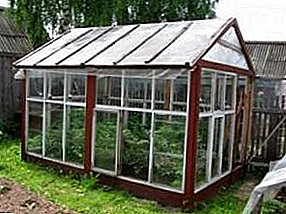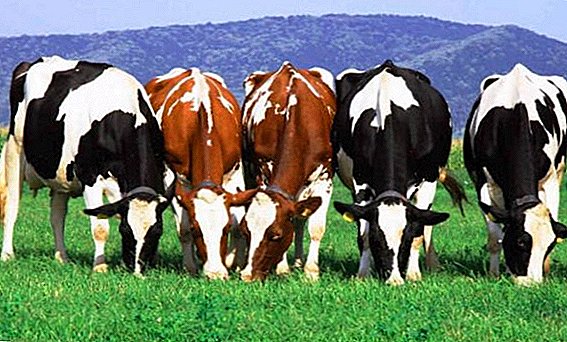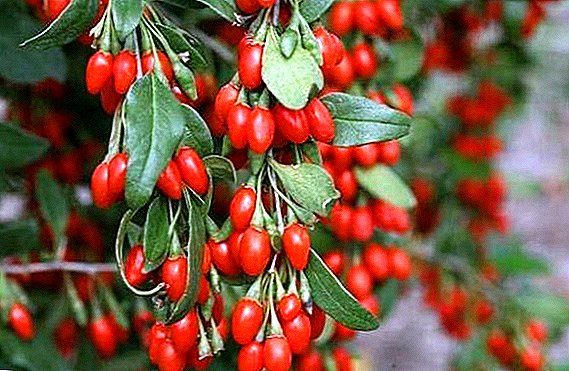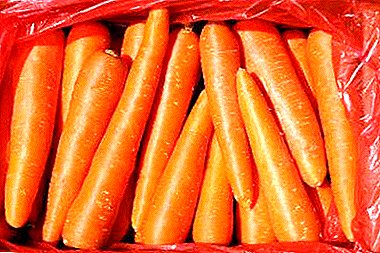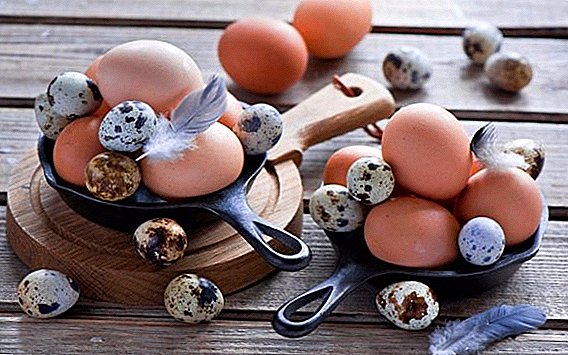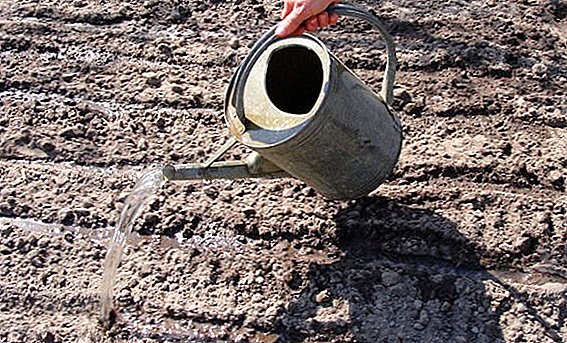 Ammonia water has found a fairly widespread use in horticulture, and this is due primarily to its low cost and ease of use. Nowadays, two brands of this substance are produced in chemical plants. Grade "A" is used for various industrial needs, and grade "B" is used as a fertilizer in agriculture. On the latter and will be discussed in this article.
Ammonia water has found a fairly widespread use in horticulture, and this is due primarily to its low cost and ease of use. Nowadays, two brands of this substance are produced in chemical plants. Grade "A" is used for various industrial needs, and grade "B" is used as a fertilizer in agriculture. On the latter and will be discussed in this article.
Description and composition
Simply put, ammonia water is a solution of ammonia in water. Externally, it is a clear liquid, which sometimes may have a yellowish tinge. It has a sharp specific aroma resembling the smell of rotten eggs.
Did you know? 10% ammonium solution is widely used in medicine and has the name "ammonia".
The chemical formula of this substance is NH4OH. The percentage of ammonia in this solution, as a rule, is about 30%: 70% is water, and nitrogen is about 24.6%.  In order to obtain such a solution, coke or synthetic ammonia is dissolved under pressure in 2 atmospheres.
In order to obtain such a solution, coke or synthetic ammonia is dissolved under pressure in 2 atmospheres.
We also advise you to learn how to properly apply ammonium nitrate in horticulture and horticulture.Ammonia has high volatile properties and is able to erode from the solution, if it is not properly stored. Therefore, under adverse conditions, it may well be unsuitable for use. The density of ammonia water is about 0.9 g per 1 cu. cm.
Impact on the garden
Ammonia water is actively used in the garden, which is associated with its low cost and ease of use. For example, the price of a liter of this solution starts from 10 rubles per kg, while a kilogram of ammonium nitrate costs at least 25 rubles.  Fertilizer based on ammonia is suitable for almost any crop, which makes it one of the most popular and widely used in the market of mineral fertilizers.
Fertilizer based on ammonia is suitable for almost any crop, which makes it one of the most popular and widely used in the market of mineral fertilizers.
On the ground
The use of this fertilizer is important on a wide variety of soil types. It is always necessary to remember that this substance is alkaline, and therefore it can change the acidity of the soil.
The best effect is recorded when applied to well-cultivated land and soil, which contains a large amount of humus.  A similar effect is due to the fact that in such soils, the process of absorption of ammonia is much more intense than on poor and light soils, which, in turn, indicates that plants absorb much more nitrogen, which is part of ammonia water .
A similar effect is due to the fact that in such soils, the process of absorption of ammonia is much more intense than on poor and light soils, which, in turn, indicates that plants absorb much more nitrogen, which is part of ammonia water .
Did you know? Nitrogen, the main component of ammonia, - one of the most common elements on Earth and the main component of air (78.09%).
On dry soil and soil with a light texture, the efficiency of ammonium hydrate will be slightly lower due to its high volatility. Ammonia simply evaporates from the treated area, if you do not close it to a sufficient depth.  When using ammonia water on bound soils that are highly resistant to erosion and decay of particles (for example, loams), it is worth adhering to a special temperature regime, since high temperatures will contribute to the early decomposition of the substance molecules.
When using ammonia water on bound soils that are highly resistant to erosion and decay of particles (for example, loams), it is worth adhering to a special temperature regime, since high temperatures will contribute to the early decomposition of the substance molecules.
The optimum period of application will be early spring, when the average daily temperature does not exceed 10 ° C.
Find out what works best for your plants - urea or ammonium nitrate.
On culture
The use of ammonium hydrate will be extremely favorable for crops for which increased protein content is a positive property, for example, for barley. This is due to the fact that ammonia increases the concentration of this substance in plants.  Ammonium hydrate, like any other nitrogenous feed, contributes to the intensification of photosynthesis in plants and increases the green mass.
Ammonium hydrate, like any other nitrogenous feed, contributes to the intensification of photosynthesis in plants and increases the green mass.
Find out what are the methods of sowing winter barley.In this regard, it is extremely important to comply with the norms of application, since there is a chance to get low yields, but at the same time - a plant with a rather intensive stem and leaves.
Important! Do not allow the solution to get into the root system of the plant, as this can damage and even completely kill the plant.
Ways and rates of introduction
Self-treatment with ammonia water is not a tricky business. It is enough just to irrigate with a solution of selected land plots at a depth of 10 cm on heavy soils and about 15 cm on light ones. This technique is common in gardening and has the name "fertigation".
Important! Fertigation will be extremely ineffective in hot weather due to the abundant evaporation of the active substance.
The best period for such treatment is the autumn period, approximately six months before the start of the active summer season.  But fertilization is not ruled out in the spring as part of complex preparations for sowing.
But fertilization is not ruled out in the spring as part of complex preparations for sowing.
Now it is worth saying a few words about the rates of:
- In case the plants are planted in narrow rows or the land intended for planting crops is fertilized, ammonium hydrate is poured with the help of specialized equipment. Spacing between coulters is about 25-30 cmand the amount of water needed on 1 ha - about 50 kg.
- Processing large areas on which planting of vegetable cultures is planned, fertilizer is brought in row-spacing. Norms - about 60 kg per 1 ha.
- Using ammonia water for industrial crops, it should be remembered that the rates are somewhat increased - up to 70 kg per 1 ha.
We advise you to familiarize yourself with the natural dressings for your plants: banana peel, eggshell, nettle, onion peel, potassium humate, yeast, biohumus.
Precautionary measures
Ammonia and its derivatives belong to the 4th class of hazard according to GOST, which means their insignificant, but still present danger to humans. In this connection, it is recommended to carry out the treatment using special measures of protection (protective suit, gloves, respirator, protective gloves).  High concentrations of ammonium in the air can cause nausea, dizziness, loss of orientation, abdominal pain, coughing and choking. If you experience these symptoms, you should immediately stop treatment and leave the area saturated with ammonia fumes.
High concentrations of ammonium in the air can cause nausea, dizziness, loss of orientation, abdominal pain, coughing and choking. If you experience these symptoms, you should immediately stop treatment and leave the area saturated with ammonia fumes.
The main "competitor" of ammonia water is urea, which contains almost twice as much nitrogen.If it comes into contact with the skin or mucous membranes, it is recommended to rinse them with a large amount of clean boiled water and if complications arise, seek medical help.
Storage features
Containers for storage of ammonium hydrate can serve as steel tanks with hermetic properties, as well as fuel tanks. Often, ammonia water is delivered by the manufacturer in special tanks, which must be returned after a certain period.  If you intend to store ammonium hydrate at your dacha, keep in mind its volatile properties and look for a container that has good sealing properties, otherwise the entire potential of this fertilizer will simply evaporate.
If you intend to store ammonium hydrate at your dacha, keep in mind its volatile properties and look for a container that has good sealing properties, otherwise the entire potential of this fertilizer will simply evaporate.
This fertilizer, despite the small danger it represents, is perfect for any gardener, both with experience and novice.
By observing all precautions, you will undoubtedly benefit greatly from the use of this substance. Good luck to you and your garden!



